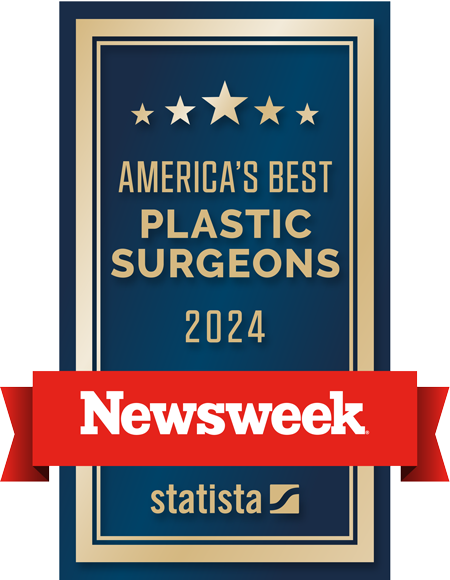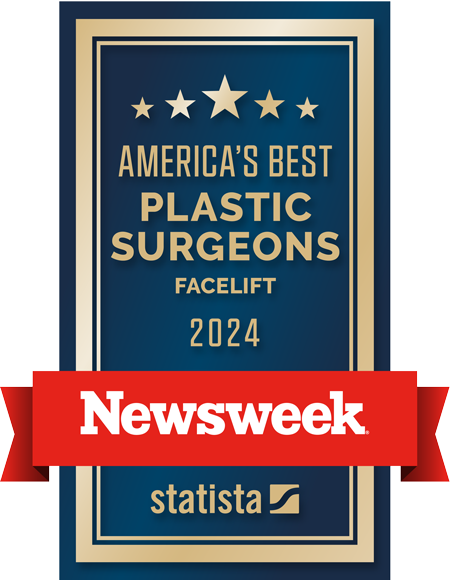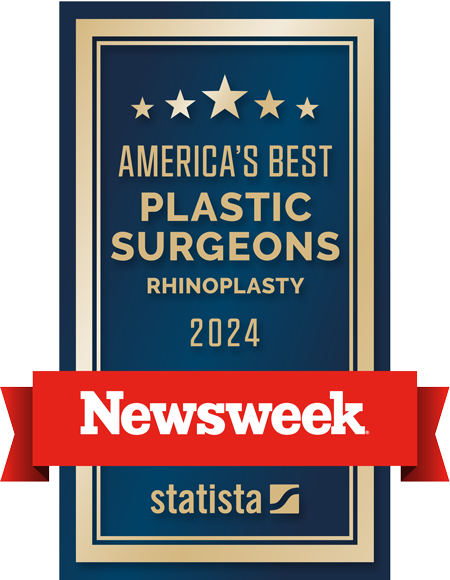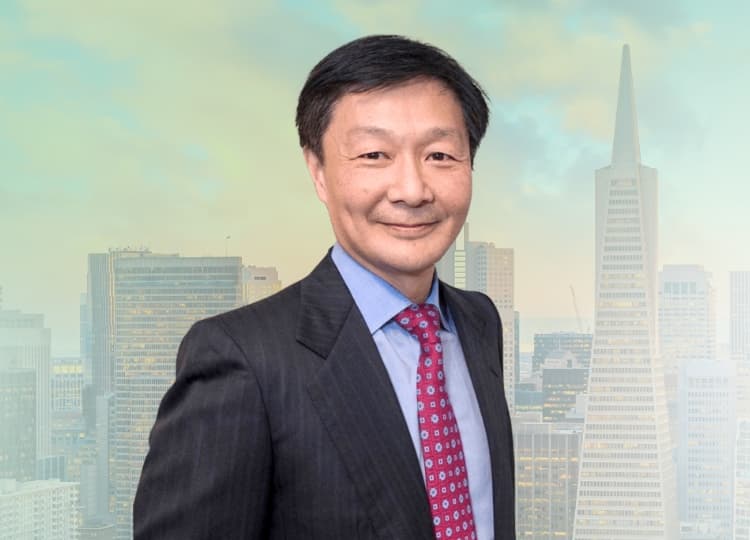Albert W. Chow, M.D.
1 Daniel Burnham Court #368c
San Francisco, CA 94109
Phone: (415) 441-1888
Monday–Friday: 9 a.m.–5:30 p.m.
Rhinoplasty in San Francisco
If you are dissatisfied with the appearance of your nose, you may feel self-conscious or even unattractive when you look in the mirror. Through rhinoplasty, sometimes called a nose job, San Francisco triple board-certified plastic surgeon Dr. Albert Chow can help your nose complement the surrounding features of your face to give your overall appearance natural symmetry and balance. He is board certified in facial plastic surgery and otolaryngology (head-neck surgery) which makes him exceptionally qualified to perform this highly complex nose surgery procedure for both cosmetic and functional reasons. As a specialist in complex Asian rhinoplasty and revision rhinoplasty procedures, Dr. Chow has successfully enhanced the facial contours of women and men from a variety of ethnic backgrounds with care to preserve the unique character of their features.
Who Is a Good Candidate for Rhinoplasty?
If you are a healthy adult and want to improve the appearance of your nose, you may be a good candidate for rhinoplasty. Dr. Chow also performs this procedure for teenagers once their facial development is complete. Rhinoplasty may be right for you if you have one or more of the following concerns:
- Your nose seems too large or too small for your face
- Your nose is crooked, twisted, deviated, or off-center
- The tip of your nose is too thick, too large (bulbous), droopy, or over- or under-projected
- There’s a bump or hump on the bridge of your nose
- Your nose seems too wide from the front
- Your nostrils are too narrow, too flared, asymmetrical, or misshapen
During your consultation, Dr. Chow will ask you to show him what you want to change about the appearance of your nose. He will carefully examine your nose inside and out to assess whether your needs are cosmetic, functional, or both. When appropriate, he will use software imaging to help you visualize possible results.
How Much Does Rhinoplasty Cost in San Francisco?
The cost of a rhinoplasty procedure at our practice depends on several factors, including the complexity of the procedure, surgical technique, and anesthesia. You will receive a personalized quote during your consultation.
With rhinoplasty, it is especially important to “get it right the first time.” Revision procedures are very complex – and they are typically more expensive than primary procedures. Accordingly, while cost is a necessary consideration, your priority should be to choose a highly trained and experienced rhinoplasty surgeon such as Dr. Chow.
Combining Procedures
Nose surgery is sometimes performed in combination with other facial plastic surgery procedures, including:
Nonsurgical options such as BOTOX® Cosmetic and dermal fillers are popular as well.
Rhinoplasty Specialties
Dr. Chow has specialized expertise in the following highly complex types of rhinoplasty:
- Revision Rhinoplasty: Some patients may not be happy with the results of a previous nose job; maybe the surgeon performed poor work or perhaps the patient was given misguided expectations. Revision rhinoplasty, also known as secondary rhinoplasty, corrects these problems. This procedure can address aesthetic issues or correct breathing difficulties that may stem from surgical errors. Highly skilled in complex revision surgery techniques, Dr. Chow can successfully fix a collapsed nose, correct asymmetry of the nasal tip, and remove a nasal implant. The complex nature of the procedure requires precise technique to carefully restore the appearance and/or function of the nose.
- Asian Rhinoplasty: Some patients of Asian descent are unhappy with certain ethnic features of their nose, such as an underprojected bridge or wide nostrils; in these cases, Dr. Chow can correct these perceived aesthetic flaws without compromising the patient’s ethnic identity. He is an expert at performing Asian plastic surgery procedures for men and women in San Francisco. With thorough knowledge of all aspects of this procedure, Dr. Chow provides patients with the most up-to-date resources about the costs, benefits, and risks of Asian rhinoplasty.
Functional Rhinoplasty
As a board-certified otolaryngologist, Dr. Chow has extensive knowledge of the intricate internal structures of the nose. He has specialized training and years of experience correcting a variety of functional concerns that may make you feel like you can’t breathe freely. He can perform one or a combination of the following functional rhinoplasty procedures:
- Septoplasty to treat a crooked or deviated nasal septum
- Turbinate reduction to remove part of enlarged nasal turbinates in one or both nostrils
Septoplasty and turbinate reduction at our San Francisco practice are not covered by insurance.
Reconstructive Rhinoplasty
If you have been injured and suffered trauma to your nose, reconstructive nose surgery can provide the following improvements:
- Rebuild, repair, and reshape your nose
- Increase facial support
- Prevent obstruction of the nasal passages
Experienced with the most extensive reconstructive procedures, Dr. Chow can safely and expertly rebuild your nose to its desired shape and proper function.
Dr. Albert Chow
Triple Board-Certified Plastic Surgeon
Dr. Albert Chow is one of the few Bay Area surgeons who is board certified in plastic surgery, facial plastic surgery, and otolaryngology. In addition to his impressive credentials and decades of experience, Dr. Chow is a kind, approachable doctor who truly listens to his patients. He specializes in cosmetic and functional rhinoplasty and procedures for patients of Asian descent.
Credentials You Can Trust




What Questions Should You Ask Your Rhinoplasty Surgeon?
It’s important to choose a qualified rhinoplasty surgeon and have realistic expectations about the surgery and recovery. Here are some questions to ask the surgeons you consider:
- How much experience do you have with rhinoplasty?
- What are the risks and benefits?
- What’s the recovery time for nose surgery?
- What is the chance of complications?
What To Expect on the Day of Surgery
Dr. Chow typically performs rhinoplasty as an outpatient procedure in our on-site surgical facility. Patients are put under general anesthesia that is administered under the care of a board-certified anesthesiologist. While rhinoplasty typically takes about 2 to 3 hours to perform, Dr. Chow can take as long as 4 to 6 hours to perform the procedure, depending on the patient’s needs and desires. His meticulous technique takes time because he conserves and preserves the nasal structures to achieve results with a natural “born that way” look. After surgery, patients relax in a private recovery room monitored by an ACLS-certified registered nurse until they are ready to return home in the care of a trusted adult.
Rhinoplasty Techniques
Your nose takes its shape from the bone and cartilage structure under the skin. This structure is remodeled during the nose-shaping procedure. Dr. Chow achieves the optimal nose shape for you by changing the configuration of bone, cartilage, and soft tissue.
In appropriate situations, Dr. Chow uses endoscopy, a surgical method performed by inserting a flexible tube (endoscope) through small incisions or natural openings in the body. A camera attached to the end of the endoscope allows Dr. Chow to see the internal treatment area. This minimally invasive technique reduces trauma during surgery and diminishes post-operation discomfort.
He performs rhinoplasty, whether cosmetic, functional, reconstructive, or for a combination of purposes, using one of the following techniques:
- Scarless closed rhinoplasty is performed through incisions concealed inside the nostrils, leaving no visible scarring. This technique requires exceptional surgical skill and it is recommended for patients who need only minimal work to restore facial balance. If you are not a suitable candidate for closed rhinoplasty, Dr. Chow will discuss your alternatives and recommend the procedure that will best give you the results you want.
- Open rhinoplasty involves an incision between the nostrils to separate the skin from the underlying cartilage and tissue. This approach demands the skill of a highly experienced surgeon such as Dr. Chow and is typically used for cases requiring more extensive correction and complicated surgical techniques.
A caring, compassionate surgeon, Dr. Chow also offers advanced methods for post-surgical pain management that effectively control pain for the first 3 to 4 days after surgery.
Rhinoplasty Recovery Guide
First 24 hours:
Rest and avoid stress. While sleeping, elevate the head to discourage swelling. Usually patients experience little pain over the first 3 to 5 days due to long-acting local anesthesia. Use a nasal drip pad as needed.
Days 1 to 3:
Breathing is congested. Swelling and bruising peak.
Days 5 to 7:
Nasal splints, casts, and stitches will be removed. Makeup may be applied to conceal any bruising. Use splint at night for further protection.
First Week:
Keep your head elevated at all times. Avoid aspirin, Motrin, blood thinners, and alcohol, which may increase swelling.
Days 7 to 10:
Bruising under the eyes has faded. Most patients are ready to return to non-strenuous jobs and school.
First 2 weeks:
Avoid blowing your nose.
Weeks 2 to 4:
Swelling diminishes significantly. Breathing is improved.
3+ weeks:
Avoid any activities that may elevate your blood pressure, such as vigorous exercise, lifting, or straining.
4 to 6 weeks:
Keep eyeglasses and sunglasses off the bridge of your nose. Avoid contact sports or running as this will cause aching and discomfort.
1 year:
Protect your nose from exposure to the sun and cold as much as possible until normal sensation returns because the skin is sensitive to sun damage.
What is a Liquid Rhinoplasty (Nonsurgical Nose Job)?
Both surgical and nonsurgical rhinoplasty can improve the appearance of the nose. Here is a comparison:
Nonsurgical rhinoplasty
- Performed with dermal filler injections
- Provides subtle changes to the bridge and tip of the nose.
- Results are instant but temporary
- No downtime
Surgical rhinoplasty
- Performed with general anesthesia
- Provides a variety of enhancements to the size and shape of the bridge, tip, and nostrils
- Results are visible after swelling and bruising dissipate and last indefinitely
- Requires downtime
Keep in mind that dermal fillers cannot provide all of the nose adjustments that surgical rhinoplasty can.
Rhinoplasty FAQ
Is rhinoplasty covered by insurance?
Dr. Chow does not accept insurance at his San Francisco plastic surgery practice.
Is a nose job considered major surgery?
Yes. Dr. Chow’s patients remain under general anesthesia during the surgery, which can take 4 to 6 hours to complete.
How do I choose the best rhinoplasty surgeon for my nose job?
Board certification is key when choosing a surgeon for nose surgery. Dr. Chow is exceptionally qualified because he has earned board certification in plastic and reconstructive surgery, facial plastic surgery, and otolaryngology—head and neck surgery. Learn more about choosing a rhinoplasty surgeon in this blog post.
How do I know if I need open or closed rhinoplasty surgery?
Most patients have open rhinoplasty because it gives the surgeon unobstructed access to the internal structures of the nose. Dr. Chow typically reserves closed (scarless) rhinoplasty for cases requiring minor changes to the tip or bridge.
Is there a different approach between male and female patients?
While the surgical techniques are the same for all patients, the specifics vary. Rhinoplasty for men improves the nose’s aesthetics while maintaining or enhancing its masculine characteristics, such as a strong bridge or broad base. In females, rhinoplasty may involve creating a more delicate and refined appearance. Dr. Chow personalizes every procedure to the individual’s facial anatomy and preferences.
How does a plastic surgeon change the appearance of the nose through rhinoplasty?
Rhinoplasty surgeons typically change the underlying cartilage and bone structures and sometimes the surface skin to improve the appearance and functionality of the nose. Dr. Chow is a plastic surgeon with ears, nose, and throat (ENT) training, so he performs surgery using conservation techniques that minimize damage to normal structures, decrease the potential for future collateral damage, and preserve functionality.
How old do you need to be to get a nose job?
Patients in their teens can have rhinoplasty (a nose job) as long as their facial development is complete, which is usually around age 15 or 16. Parents should ensure their teens have realistic expectations about the outcome of the surgery.
How painful is the recovery period?
Most patients are relieved to find out that recovery isn’t especially painful. Instead, it’s common to have a dull headache for the first few days. Patients also feel like they have a stuffy nose for the first week or so due to swelling inside the nose.
Is there anything I should avoid after rhinoplasty surgery?
The first few weeks after surgery, avoid creating pressure in your nose by bending over, lying flat, blowing your nose, and doing anything that causes you to strain. It’s essential to follow these and the rest of your post-op instructions carefully to avoid complications and minimize recovery time.
What is a tip plasty?
A tip plasty is a rhinoplasty technique that focuses solely on reshaping the tip of the nose. This procedure addresses issues such as a bulbous, drooping, or asymmetrical nasal tip without altering other parts of the nose. Tip plasty is often less invasive than full rhinoplasty and may be an excellent option for patients who are satisfied with the overall shape of their nose but desire refinement to the nasal tip. Dr. Chow can determine if you’re a good candidate for tip plasty during your consultation.
Can a rhinoplasty change my smile?
Possibly. Swelling or numbness may affect the smile after rhinoplasty, but the changes are usually temporary and fade within about 2 to 4 weeks.
Will rhinoplasty affect nasal allergies?
The impact of rhinoplasty surgery on allergies is minimal. However, it may help with breathing when passages are opened. We often recommend that our patients get treated for allergies and make necessary lifestyle modifications before surgery.
Are the results permanent?
Rhinoplasty results last indefinitely when you avoid injury or damage. The aging process continues but typically doesn’t change the shape of the nose significantly.
If you are unhappy with the appearance of your nose or have trouble breathing and would like to explore your rhinoplasty options in San Francisco, request a consultation with Dr. Chow using his online form or call our practice at (415) 441-1888 to schedule an appointment.







